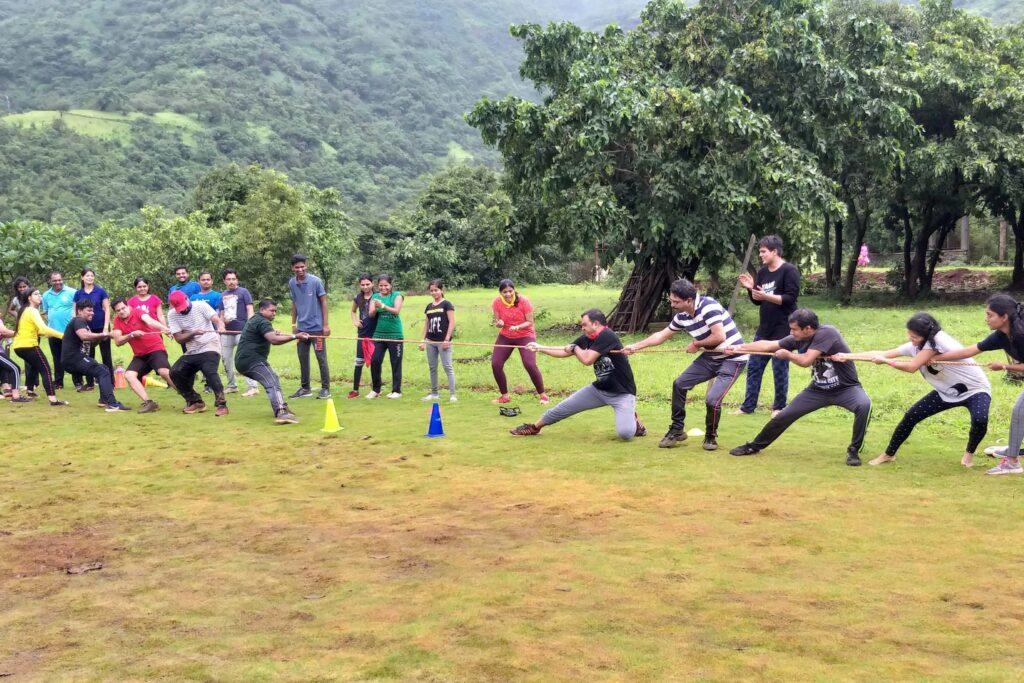Let’s be honest.
Team building is often the strategy your business forgets—until someone says, “We have a team building session next week,” and the first image that pops into your head is a bunch of people awkwardly holding hands, walking blindfolded in a line. Or doing the old “trust fall” while hoping nobody lets them crash into the floor (or worse… HR’s inbox).
Maybe that’s why team building is often the strategy businesses forget—when done wrong, it feels more like a formality than a fix.
We’ve been there.
And hey—not to say those one-day team-building sessions don’t help.
They do. They offer a breather, a burst of energy, and sometimes even a breakthrough.
But often, the old patterns creep back in.
That’s why it’s worth thinking about a longer-term solution—one that goes deeper than a day out.
Because here’s what no one tells you:
Team building isn’t about playing games. It’s about playing the long game.
>It’s not a break from work.
>It’s how real work gets done.
Enter: Classic Team Trouble
A few months back, we worked with a mid-sized company. From the outside, they had it all—solid reputation, great leadership, and teams that were high on expertise.
But behind closed doors?
• Meetings were filled with interruptions and undercurrents.
• People stayed silent when they should’ve spoken up.
• Deadlines were slipping, and energy was nosediving.
• Some of the top performers had already checked out—mentally or literally.
That’s when their leadership reached out. “We want to do a team-building day.”
We paused.
Because what they really needed wasn’t a day. It was a reset.
Team Building Isn’t a Break. It’s the Work.
We told them what we’ll tell you: You don’t fix silos, friction, and blame-games with pizza and trust walks.
You fix it by:
Creating a space where people feel safe to speak—and be heard
Understanding how each person communicates, leads, and collaborates
Addressing what’s not being said—but is still being felt
And turning feedback into a tool, not a trigger
Over the next few weeks, we worked with them through small group sessions—across departments, functions, and levels. What started as awkwardness turned into awareness.
People who hadn’t spoken to each other in weeks began to have real conversations.
One manager said at the end of the journey, “I didn’t realize how much I’d shut people out… until someone pointed it out with care.”
That’s team building. Not the fun-and-games kind. The foundation-building kind.
Let’s Get Real: What Happens When You Don’t Invest in Team Building Strategies?
If you think team building is fluff, check if your
team is quietly bleeding under these symptoms:
- People operate in silos
- There’s “email warfare” between departments
- Blame games are more popular than birthdays
- Meetings go nowhere—but keep happening anyway
- Your star players are mentally clocking out
Sound familiar?
Here’s the truth: No strategy works if your team doesn’t.
That’s why the importance of team building in organizations goes way beyond an annual retreat.
It’s the hidden engine that drives your:
- Innovation
- Culture
- Employee retention
- And business outcomes
Team Building TOOL TIME: Assess Your Team Health in 5 Minutes
Let’s take a pit stop here.
Here’s a quick tool to assess where your team currently stands.
Team Trust Thermometer (Score 1-5 on each. Be honest!)
| Statement | Score (1 = Never, 5 = Always) |
| People speak their mind even if it’s uncomfortable | ___ |
| Feedback is shared openly and constructively | ___ |
| Team members take ownership without being pushed | ___ |
| Conflicts are addressed directly, not avoided | ___ |
| Everyone understands each other’s roles clearly | ___ |
| There’s cross-functional support during crunch times | ___ |
| Team celebrations are genuine, not forced | ___ |
| No one’s invisible. Everyone’s voice matters | ___ |
Total Score: /40
- 35–40: High-performing team. Celebrate this!
- 25–34: Functioning okay, but cracks are forming.
- 15–24: You’re surviving, not thriving.
- Below 15: Urgent intervention needed. Call us. Yesterday.
Your Team’s Not Broken—They’re Just Not Bonded
Think of your team like a band of brilliant soloists.
Without rhythm, they’ll still play—but the music won’t hit right.
Hvaing a Team building strategy in your business is about finding that rhythm. And sometimes, all it takes is a space where people can say, “Hey, this isn’t working—and here’s what I need from you.”
That’s when things shift.
And no, not through weird games. Through thoughtful experiences that:
- Bring buried issues to the surface
- Teach people how to listen without defending
- Make “I got your back” more than just a buzzword
Culture Isn’t on the Walls. It’s in the Halls.

We’ve walked into offices that had all the right words framed on their walls—
“Respect.” “Ownership.” “Collaboration.”
And yet, in the meeting room next door, no one would look each other in the eye.
Culture isn’t a slogan.
It’s what shows up when things get hard.
It’s how people speak to each other when the deadline’s tight, or when someone makes a mistake.
When team building actually works, you don’t need posters.
You feel the culture in:
- That quiet “I’ve got this—let me help”
- Someone owning their mistake with grace
- Teammates checking in, not just checking tasks
That’s not soft stuff. That’s what strong teams are built on.
When Teams Go Quiet, Performance Slows Down
Here’s what we’ve seen over and over again:
It’s not the shouting matches that break teams.
It’s the silence.
- The ideas that don’t get shared.
- The feedback that stays bottled up.
- The energy that slowly fades into “let me just do my job and go.”
And here’s the truth: Teams that play it safe don’t grow. They just survive.
That’s why we design team building strategies that help people unlearn silence and relearn safety.
Because when people feel safe to speak, that’s when momentum returns.
That’s when the magic begins.
Conflict Isn’t the Problem. Hiding It Is.
Let’s be honest—teams aren’t perfect. They never will be.
Disagreements will happen.
But what matters is how your team moves through them.
- Do they sweep issues under the carpet?
- Talk in corners instead of across tables?
- Or do they step up and say, “Let’s figure this out together”?
Healthy teams don’t avoid conflict.
They handle it—with honesty, with empathy, and with clarity.
That’s the kind of space team building is meant to create.
Not a war room. A brave room.
Team Building Strategy for the Week
A tiny shift. Big ripple.
The Reverse Shout-Out
At your next team meeting, ask everyone to share one thing they learned from a colleague last week.
No presentations. No prep. Just real appreciation.
Why it works:
- It makes people feel seen.
- It celebrates everyday learning.
- It reminds everyone: “We’re in this together.”
Simple? Absolutely.
But small moments like these build real culture.
When Team Building Strategy Works, It Feels Different
It’s not about matching T-shirts and cheerleading chants.
It’s when someone says:
“Hey, I saw your plate’s full. Want me to take that off your hands?”
Or
“Thanks for calling that out. I didn’t realise I was doing that.”
It’s in the laughter after tough meetings.
In honest feedback that helps, not hurts.
In how people show up—especially on tough days.
That’s what we create at The Yellow Spot.
Not one-off events, but lasting shifts.
Ready to Build a Team That Feels Like a Team?
If this sounds like what your team’s been missing, don’t wait for another offsite.
Let’s design a team-building strategy that’s:
- Thoughtful
- Tailored
- And actually moves the needle
Connect with us –
info@theyellowspot.com
www.theyellowspot.com
We’ll bring the depth, the design, and the follow-through.
Because your team doesn’t just need a break.
They need a breakthrough.





